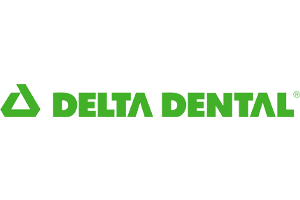
Insurance
We work with most dental insurance plans and submit claims on your behalf. If you don’t have insurance, ask us about our Drewyer Dentistry Membership.
Check Your Insurance
Curious if insurance will cover your exam? We can tell you in just a few seconds.
Frequently Asked Questions
You can contact your insurance provider directly to learn about your coverage details and benefits. Our team can also assist — we’ll gladly help you obtain a detailed breakdown of your benefits. To do so, we’ll just need a few details, such as your carrier name and subscriber ID.
Being out-of-network simply means our office does not have a direct contract with your insurance provider — it does not mean we can’t accept your insurance. For in-network providers, fees are based on agreed rates. For out-of-network coverage, we use the standard service fee and apply the out-of-network benefit percentage to determine your portion. We accept most major PPO insurance plans but are not contracted with Denti-Cal, Medi-Cal, or HMO plans.
Dental insurance is similar to other employer-provided coverage like medical or vision insurance — it includes monthly premiums, provider guidelines, and defined benefits. However, unlike medical insurance, dental plans usually have a yearly maximum reimbursement limit, while medical insurance covers costs once you’ve met your out-of-pocket maximum.
Dental insurance functions much like medical insurance, with one main difference — the insurance provider pays up to a set “maximum allowable” amount during each benefit period (typically one year), and the patient pays any costs beyond that limit. Coverage is divided into categories — preventive, basic, and major — and many PPO plans pay 100% for preventive care, 80% for basic treatments, and 50% for major procedures. These percentages vary by plan, so reviewing your specific benefits is important. Any amount not covered by insurance is the patient’s responsibility.
Most dental insurance plans cover a range of services, including preventive care (exams and cleanings twice a year), basic care (fillings, crowns, etc.), and major procedures (oral surgery, orthodontics). Each category is typically covered at a set percentage — often 100% for preventive, 80% for basic, and 50% for major services. Orthodontic coverage usually includes additional rules, such as age limits, eligible dependents, and lifetime maximums instead of annual ones.
PPO stands for “Preferred Provider Organization.” PPO plans offer flexibility — you don’t need to select a primary dentist or get a referral to see a specialist. You can visit any licensed dentist, but you’ll usually save more when visiting in-network providers. This differs from HMO/DHMO plans, which require you to choose a primary dentist and restrict you to that office unless referred to a specialist. HMO plans often come with lower costs and minimal copays.
Most PPO dental insurance plans cover two exams and cleanings per calendar year.
In many cases, yes — but coverage varies by plan. Some policies include a “missing tooth clause,” meaning implants may not be covered if the tooth was missing before coverage began. Our team can help you confirm the details of your specific plan before starting treatment.
Often, yes. Orthodontic coverage usually includes conditions such as age limits, eligible family members, and specific benefit amounts. Unlike other treatments, orthodontic benefits usually have a lifetime maximum rather than an annual limit. We can help review your plan to clarify what’s covered under your specific policy.





